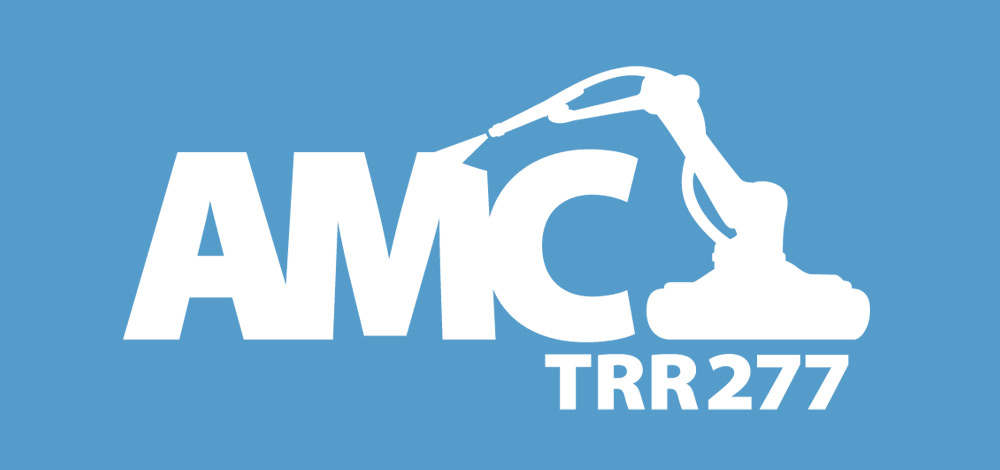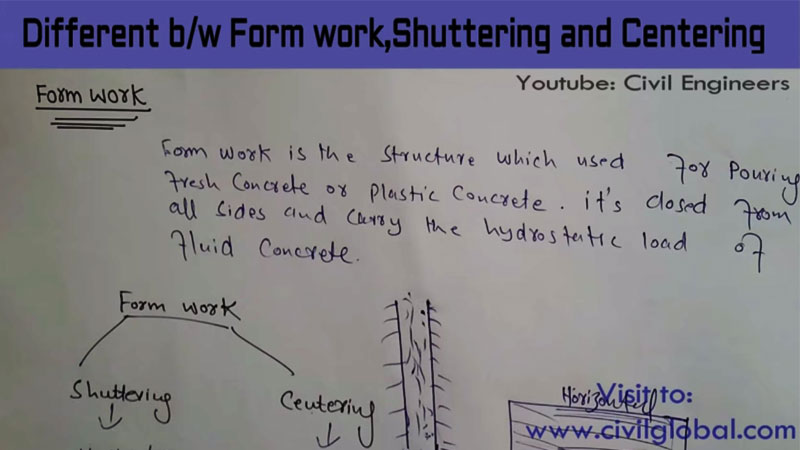Cutting-edge Patterns in Formwork and Scaffolding for Modern Building Projects

Formworks can additionally be named based upon the kind of architectural participant construction such as slab formwork for usage in the piece, light beam formwork, column formwork for use in beams and columns respectively and so on. Focusing refers to the support group that maintains the formwork secure and degree during the pouring and curing of concrete. Shuttering and view publisher site is a technique of developing a momentary structure to sustain wet concrete throughout the pouring and healing process. Shuttering is the process of constructing the formwork or mold and mildew that holds the concrete in position, and centering refers to the support system that maintains the formwork secure and level.
We use this system as project formwork in industrial, commercial and residential building and construction for specific architectural concrete parts or bridge joints and preserving wall surfaces. The four major sorts of scaffolds are single post scaffolds, dual post scaffolds, put on hold scaffolds, and cantilever scaffolds. The 3 primary types of scaffolds are solitary pole scaffolds, double pole scaffolds, and put on hold scaffolds. It is important to keep in mind that formworks carry practically triple the weight of scaffolding. While the optimum you can obtain for scaffolding is 1000 kgs, formworks can bring up to 3000kg of deadweight concrete.
This sort of scaffolding is really light and used for easy work such as painting, directing, whitewashing, distempering and numerous others. ULMA systems gave a high-quality coating for concrete surface areas at the Museum of Modern Art, Poland. Although we are reasonably average formwork professionals, we do not do not have any kind of experience in the industry.
So we can claim shuttering is a kind of formwork to support vertical surface areas. Formwork is constructed from different materials such as steel, plywood, plywood steel, and timber and steel combination. There are different types of formwork depending on the function it's being made use of for. This formwork of flexible plywood strips can be unravelled like a fan; 4 of them can be put together within a wood frame to produce a robust mold onto which concrete can be put straight. The zigzag form allows the formwork-- which evaluates just 52 pound (24 kg)-- to sustain 1 ton of concrete, and can be removed from underneath the healed concrete to be reused. Making use of sophisticated architectural geometry, it mold and mildews rose floors using 60% much less concrete and 90% less steel contrasted to standard approaches.
Formwork And Scaffolding
Recognizing Formwork

Formwork plays a vital function in the building and construction sector as it offers the short-term structure required to form and support concrete till it attains adequate toughness. This essential part of building jobs makes certain that concrete components preserve their intended geometry and stability. Scaffolding, on the various other hand, acts as a framework that supports workers and products during building and construction, helping with safe access to elevated areas. Recognizing the ins and outs of formwork and scaffolding is crucial for successful task execution and performance in building and construction practices.
Interpretation of Formwork
Formwork is a short-lived or irreversible structure used to mold and mildew the elements of concrete up until it sets and gains stamina. It plays a vital function in building and construction, specifically when working with concrete, as it forms and supports the material throughout the healing procedure. Understanding formwork is important for ensuring that the final product satisfies architectural and visual demands.
- Sorts of Formwork:
- Hardwood Formwork
- Steel Formwork
- Aluminum Formwork
- Plastic Formwork
- Benefits of Utilizing Formwork:
- Cost-efficient solution for complex layouts
- Provides accurate dimensions and surface area coatings
- Reusability contributes to sustainability
- Improves safety throughout building
- Formwork Materials:
- Wood
- Steel
- Plastic
- Compound materials
In mix with formwork, scaffolding is one more vital facet of building and construction, offering accessibility and assistance to employees and materials throughout the building process. Both systems are crucial for maximizing effectiveness and making sure security on the construction site.
Understanding Scaffolding
Scaffolding plays an important role in construction and renovation tasks, offering a short-lived structure that supports employees and products during the building process. Comprehending the complexities of scaffolding is crucial for guaranteeing security, performance, and performance on job sites. check my site looks into the fundamentals of formwork and scaffolding, exploring their layout, kinds, and applications to boost our understanding of these crucial elements in the building and construction sector.
Meaning of Scaffolding
Scaffolding is a short-lived framework made use of to support individuals and materials throughout the construction, upkeep, or repair service of structures and various other structures. It is important for offering secure gain access to and working conditions at numerous heights. Typically made from steel or timber, scaffolding enables workers to reach elevated areas while guaranteeing stability and security.
In the context of building and construction, scaffolding is created to hold the weight of employees, tools, and products while enabling reliable movement. The design might vary depending on the certain needs of the task, consisting of the elevation, location, and sort of job being performed.
Additionally, scaffolding plays a crucial function in making certain that job can be done securely and successfully. It helps to avoid mishaps and injuries by supplying a safe system for workers, therefore enhancing performance and advertising compliance with safety and security policies.
Combination of Formwork and Scaffolding
The integration of formwork and scaffolding plays an essential duty in the building and construction market, giving important assistance frameworks that ensure safety and stability during the building process. Formwork is used to form and have concrete up until it solidifies, while scaffolding provides a momentary framework that allows employees to access elevated areas securely. Together, these systems enhance performance, simplify workflows, and contribute to the general stability of building and construction jobs, highlighting their relevance in modern-day design techniques.
Working Together on Building And Construction Websites
Integration of formwork and scaffolding is vital in building processes, as both are important for sustaining structures during numerous phases of building. Formwork works as the mold and mildew for concrete aspects, guaranteeing they achieve the desired shape and stamina, while scaffolding supplies temporary support and secure accessibility for workers. Their partnership improves effectiveness, safety and security, and quality in construction jobs.

Efficient partnership in between formwork and scaffolding systems can cause significant renovations in project timelines and take the chance of monitoring. For instance, when formwork is designed to be suitable with scaffolding, it allows for quicker setting up and disassembly, minimizing downtime. Furthermore, this assimilation decreases the number of materials utilized, resulting in set you back savings and much less waste onsite.
Moreover, the safety and security of building and construction workers is extremely important. Scaffolding creates stable platforms for workers to operate at heights, while formwork should be made to stand up to the weight of damp concrete and the lots imposed during building. By collaborating the design and installment processes of both systems, construction teams can ensure that safety standards are fulfilled, reducing the risk of mishaps and injuries.
In regards to architectural stability, utilizing interrelated systems allows for far better overall efficiency. When formwork is securely affixed to the scaffolding framework, it aids preserve the placement and kind during the curing process of concrete. This leads to higher quality surfaces and the durability of the created aspects, inevitably improving the resilience of the entire building.
In conclusion, the combination of formwork and scaffolding not just improves building operations but additionally considerably contributes to safety, effectiveness, and structural integrity. Making sure that these systems interact seamlessly is important for the success of any kind of construction project.
Performance and Cost-Effectiveness
Assimilation of formwork and scaffolding plays an important role in improving the performance and cost-effectiveness of building and construction tasks. By coordinating these 2 essential elements of building, specialists can simplify processes, reduce labor expenses, and enhance security on site.
Formwork provides the momentary framework essential to shape and support concrete up until it obtains enough stamina, while scaffolding uses a safe platform for workers and materials. When these systems are developed and executed with each other, the general workflow boosts significantly. For instance, the use of modular scaffolding systems that line up with formwork formats enables quicker assembly and disassembly, reducing downtime.
In addition, incorporated systems assist in better product usage and logistics. With worked with preparation, the same products can often serve dual purposes, resulting in reductions in waste and transport prices. This harmony not only increases project timelines but likewise minimizes the threat of delays that can be expensive to both time and spending plan.
Furthermore, safety and security is boosted when formwork and scaffolding are created as a cohesive system, minimizing the capacity for crashes. Reliable combination ensures that employees have far better accessibility to different building and construction degrees, advertising a more secure working setting.
In recap, the critical integration of formwork and scaffolding is essential for accomplishing high degrees of efficiency and cost-effectiveness in building. By accepting ingenious techniques and products, professionals can maximize their procedures, elevate security criteria, and eventually supply tasks quicker and within budget plan.
